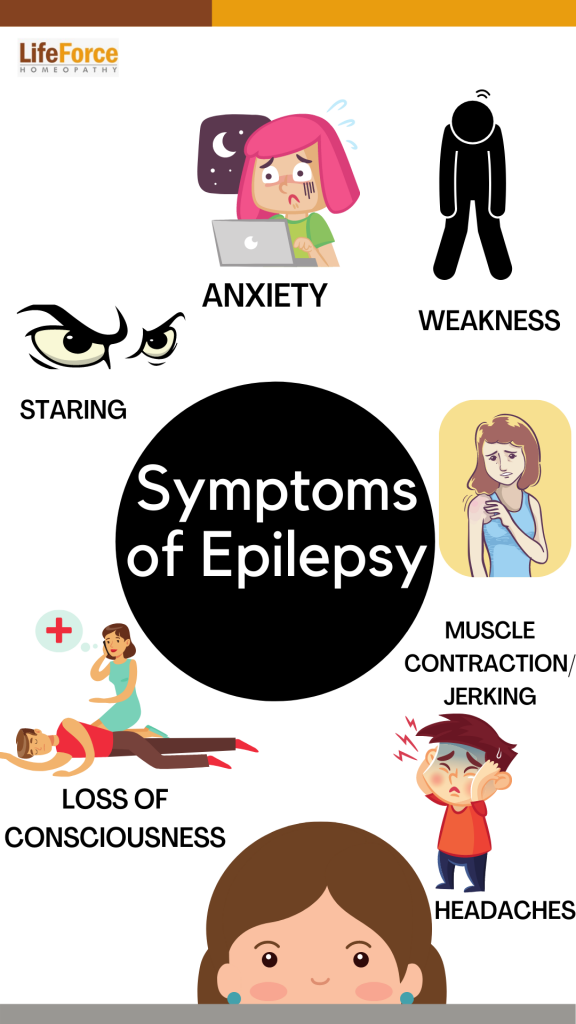
Symptoms Of Each Phase Of Epilepsy That We Must Know
Epilepsy is one of the most common disorders affecting the central nervous system. People diagnosed with epilepsy have recurrent episodes of seizures. Seizures are hyperexcitability of a group of neurons concerned to a part of the brain or brain as a whole. Disruption in the electrical activity temporarily causes disturbances in the messaging system of the neurons in the brain. It is estimated that incidences of epilepsy are the highest than any other neurological disorder across the world. In India, the incidence rates show that about six to ten people in a population of thousand individuals suffer from epilepsy. About 50 million people suffer from epilepsy across the globe, while 10 million people in India suffer from this neurological disorder. Epilepsy is classified broadly as focal and generalized epilepsy. In focal epilepsy, a part of the brain is affected. This...

Retinal Migraine: Symptoms, Causes, Preventive Tips, & Homeopathic Treatment
Retinal migraine is a rare eye condition that causes short episodes of visual problems, such as zig-zag vision, blurring of vision, or a vision loss. These episodes may or may not be followed by a headache on the affected eye’s side. Retinal migraine is often confused with migraine aura since both of them have almost similar symptoms, however, they are different conditions. So, in this article let us understand more about the retinal migraine, how it differs from the migraine aura, its causes, and prevention. Migraine Aura People with classical migraine experience visual disturbances for some time before they develop a migraine headache. This is called migraine aura. They may experience zig-zag flashes of light or colorful sparks in the field of vision. Some people experience haziness or blurring of vision as if looking from fog or mist. This affects both the eyes. Migraine aura may last for half an hour It is often followed by migraine a headache: pain in one half of the head with sensitivity to the noise and light and nausea and vomiting. Occasionally, an episode of migraine aura may subside without developing a headache. The origin of migraine aura is in the brain. Retinal Migraine and Its Symptoms Retinal migraine is rare and usually affects only one eye. The person experiences brief attacks of blurring of vision or a loss of vision. It starts from the center of the eye and slowly spreads and affects the entire field of vision of that eye. Vision loss, partial vision loss, and headaches are some of the common symptoms of retinal migraine. This episode lasts for anywhere between half an hour to one hour. The person may experience a headache during or after the episode of visual disturbance. The person may also have a history of other types of migraines. What Causes Retinal Migraine? The episode of retinal migraine is believed to occur due to a spasm of blood vessels supplying the retina and the parts around it. There is a reduced blood supply due to this spasm causing the visual disturbances. An episode of visual migraine could be triggered due to Exercise Smoking Stress and emotions High Blood pressure...

Homeopathic Management For Systemic Lupus Erythematosus (SLE)
Systemic Lupus Erythematosus (SLE) is a chronic health condition that causes inflammation in connective tissues, which offer the necessary flexibility and strength to structures throughout the body. SLE can also be defined as an autoimmune disorder that occurs when the immune system of the body attacks its very own tissues and organs. SLE can affect not one but many organs, such as kidneys, skin, joints, lungs, central nervous system, and hematopoietic system (blood-forming). Systemic Lupus Erythematosus is found to be more common in women than in men. The severity of the disease may vary from mild to life-threatening. The disease is also widely known by the name ‘lupus’, even though it is only one of the various forms of Lupus. The other common forms of Lupus are: Cutaneous Lupus Erythematosus: A form of lupus confined to the skin alone is called cutaneous lupus erythematosus. Drug-induced Lupus Erythematosus: It results due to continuous medication for some other disease, such as Tuberculosis, High blood pressure, hypertension, etc. This type of lupus rarely affects any major organs. Neonatal Lupus: It affects the infants of women who have lupus and results due to the antibodies from the mother that affect the infant while in the womb. This is not a common form of lupus. Causes of Systemic Lupus Erythematosus (SLE): SLE, as we stated earlier, is a form of autoimmune disorder, however, the exact cause of the onset of lupus is unknown. A few of the most common factors identified from the patients’ pool who have been identified with SLE are genetic traits, environmental factors, and change in the hormonal activity (specific to women). Detailed study and analysis of the various factors resulting in lupus kind of condition are still underway within the medical fraternity. Symptoms of Systemic Lupus Erythematosus (SLE): Lupus, as we have seen, can affect a lot of the organs, such as joints, lungs, skin, kidney, etc., Hence, the symptoms may also differ accordingly. Sometimes, lupus symptoms may come and get subsided over a period. The most common symptoms include: Fatigue or kind of extreme weakness Joint Pain Skin rashes Let us see in detail how it affects various body organs (i) Joints: Joints of the hands and feet can get severe pain in the lupus stage. The swelling of joints is also possible in the worst condition. The inability to move the hands and feet freely is also one more after effect of lupus....

Hyperhidrosis (Excessive Sweating): Causes, Symptoms, And Homeopathy Treatment
Sweating or sweat formation is a natural process of our body wherein the body cools down itself naturally....

Diet For Nephrotic Syndrome Patients To Follow
Nephrotic syndrome is one of the discomforting conditions which several people, particularly kids, suffer from throughout the world....

Otitis Media: Causes, Symptoms, And Homeopathic Treatment
A middle ear infection is one of the most common types of ear infections observed in people around...

How To Manage Constipation In Children
In the previous blog, we saw the causes and symptoms of constipation in children. In this blog, we...

Constipation In Children: 11 Causes And 8 Symptoms You Should Be Aware Of
Constipation in children is one of the common problems that many kids suffer from and need to visit...

Diet For Rheumatoid Arthritis Patients To Follow
Have you ever experienced stiffness in your joints, maybe after a long hectic day? Imagine experiencing this every...

Warning Signs Of Depression That You Should Be Aware Of
10th October is recognized as World Mental Health Day to promote mental health awareness and education globally as...

